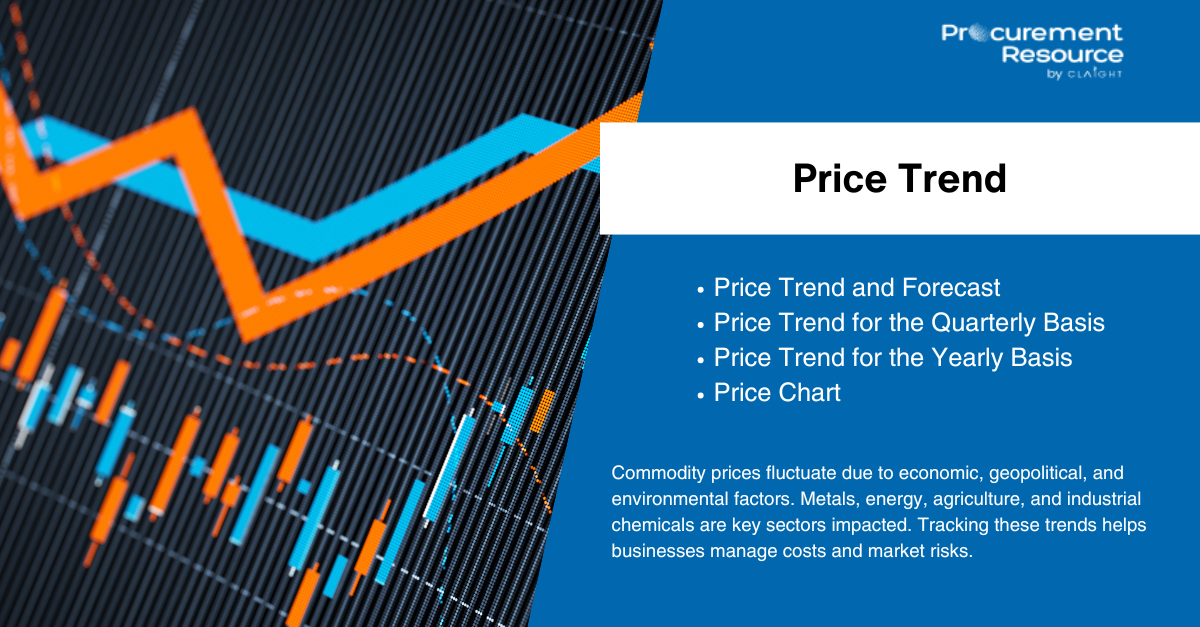Sorbitol, a sugar alcohol widely used in the food, pharmaceutical, and cosmetic industries, has seen fluctuating price movements influenced by various global and regional factors. Understanding the Sorbitol price trend is crucial for manufacturers, suppliers, and procurement professionals aiming to make informed purchasing decisions. This article dives deep into the latest price updates, market dynamics, historical data, and forecasts to provide a comprehensive overview of the sorbitol market.
Latest Price and Market Overview
The sorbitol market has experienced notable shifts due to changes in raw material costs, supply chain constraints, and demand from end-use industries. Sorbitol prices are typically influenced by the availability of feedstock like corn syrup and glucose, geopolitical events, and regulatory changes affecting production and import-export policies.
Sorbitol is extensively used as a sweetener, humectant, and texturizer in various products, making it a staple ingredient. This high demand across multiple industries keeps price monitoring essential. Market participants need access to real-time pricing to manage procurement strategies effectively and to anticipate market volatility.
Historical Sorbitol Price Trends
Analyzing historical sorbitol price data reveals several key trends:
- Seasonal Fluctuations: Prices often peak during periods of high demand, such as the festive seasons in food and confectionery industries.
- Raw Material Impact: Corn and glucose price volatility directly affects sorbitol pricing. Any disruptions in agricultural output or supply chain bottlenecks for these raw materials can lead to price hikes.
- Global Economic Conditions: Inflation rates, currency fluctuations, and international trade tensions have historically impacted sorbitol costs.
Tracking historical data through charts and databases enables buyers to understand market behavior and plan procurement cycles accordingly.
Market Analysis: Drivers and Challenges
Drivers
- Growing Demand in Food & Beverage: Sorbitol is preferred for low-calorie and sugar-free products, driving its demand in confectionery, chewing gum, and bakery products.
- Pharmaceutical Applications: Sorbitol serves as an excipient in tablets, syrups, and laxatives, expanding its market scope.
- Cosmetic Industry Growth: It is widely used in skincare products for its moisturizing properties.
Challenges
- Raw Material Price Volatility: The cost of corn starch and glucose, essential for sorbitol production, is subject to seasonal and geopolitical risks.
- Regulatory Restrictions: Some regions impose limits on sugar alcohols, impacting demand and trade.
- Environmental Concerns: Sustainable production practices are increasingly demanded, sometimes affecting costs and supply.
Sorbitol Price Forecast and Future Outlook
Forecasting sorbitol prices requires an analysis of multiple factors such as feedstock supply trends, end-user demand, and geopolitical influences. Industry analysts use econometric models incorporating historical price data, production capacity expansions, and global trade flows to project future prices.
Market intelligence reports often provide short-term (quarterly) and long-term (5-10 years) forecasts, enabling stakeholders to prepare for upcoming shifts in supply-demand dynamics.
Regional Insights and Market Segmentation
North America
The North American sorbitol market is characterized by steady demand, largely driven by the pharmaceutical and food sectors. Local corn production keeps feedstock supply relatively stable, helping manage costs.
Europe
Europe sees strong demand from the cosmetics and pharmaceutical industries, with stringent regulatory frameworks influencing market trends. Sustainable sourcing and eco-friendly manufacturing are gaining prominence.
Asia-Pacific
The Asia-Pacific region holds the largest share of the global sorbitol market, propelled by rapid urbanization and rising disposable incomes. Countries like China and India are significant producers and consumers, impacting regional price trends heavily.
Latin America & Middle East
Emerging markets in Latin America and the Middle East are witnessing increasing usage of sorbitol in processed foods and pharmaceuticals, contributing to gradual price increases.
Procurement Resource and Best Practices
For procurement professionals navigating sorbitol price volatility, leveraging specialized procurement resources is essential. These include:
- Market Intelligence Platforms: Offering real-time price tracking, demand forecasts, and supplier databases.
- Supplier Relationship Management: Building strong partnerships with manufacturers to secure stable pricing and priority supply.
- Hedging Strategies: Using commodity contracts and futures to mitigate price risks.
- Sustainability Criteria: Incorporating supplier assessments based on environmental impact to align with corporate responsibility goals.
Utilizing these resources helps optimize purchasing decisions and manage budget forecasting more effectively.
Request for the Real Time Prices : https://www.procurementresource.com/resource-center/sorbitol-price-trends/pricerequest
Additional Market Insights and Data Sources
- Sorbitol Market Reports: Comprehensive reports from market research firms provide deep dives into pricing trends, competitive landscape, and regional segmentation.
- Price Databases: Access to historical sorbitol price data and charts helps visualize market movements and anticipate future trends.
- News Updates: Monitoring news related to raw material supply, regulatory changes, and geopolitical events is critical for understanding sudden price fluctuations.
- Industry Forums: Networking with industry experts and peers offers qualitative insights beyond numbers.
Contact Information
Company Name: Procurement Resource
Contact Person: Ashish Sharma (Sales Representative)
Email: [email protected]
Location: 30 North Gould Street, Sheridan, WY 82801, USA
Phone:
UK: +44 7537171117
USA: +1 307 363 1045
Asia-Pacific (APAC): +91 8850629517









